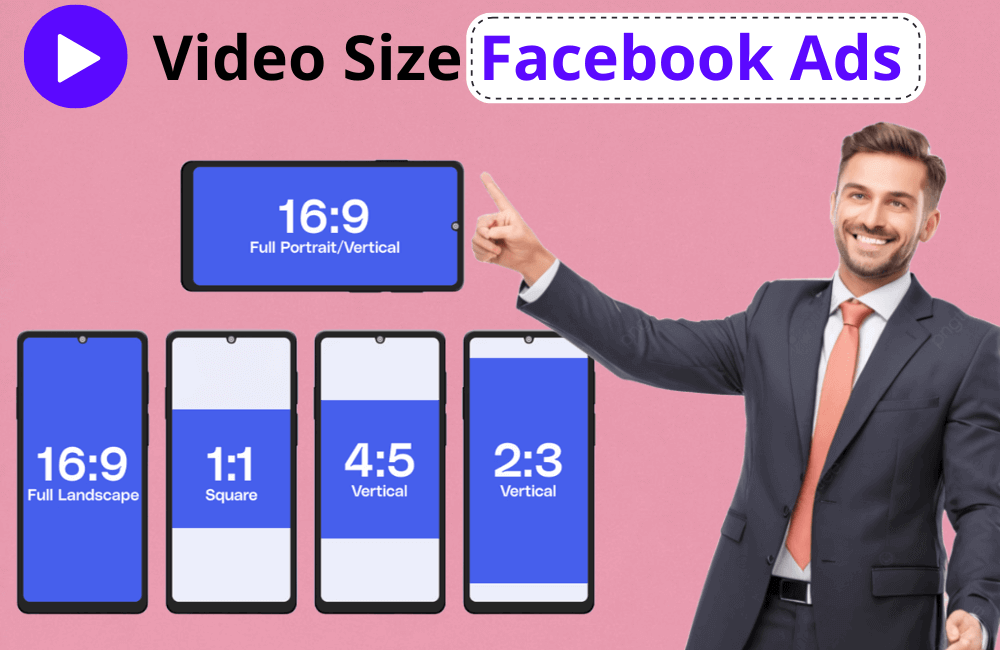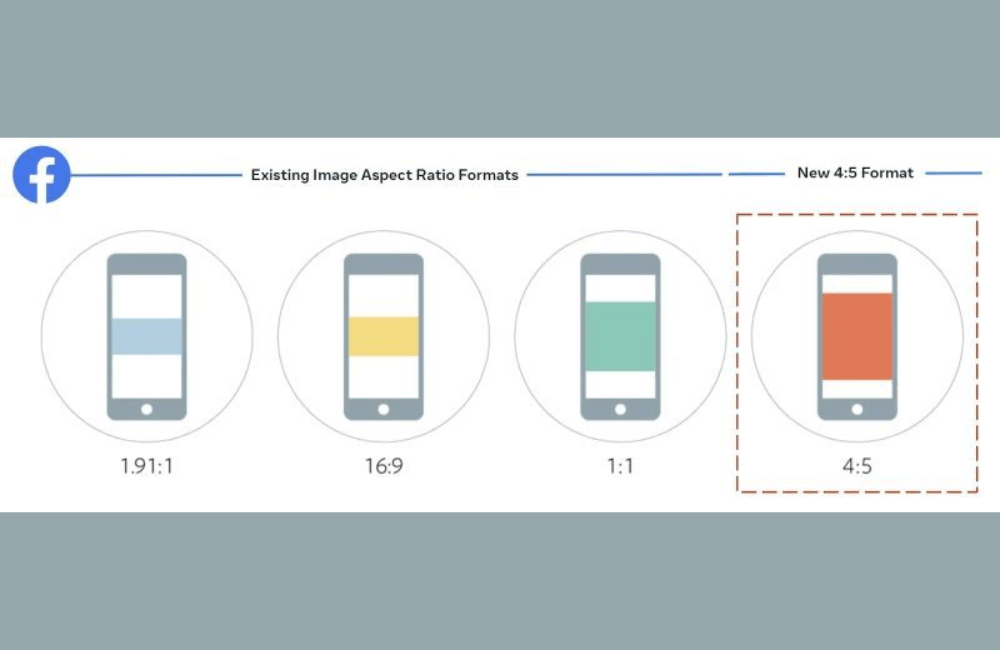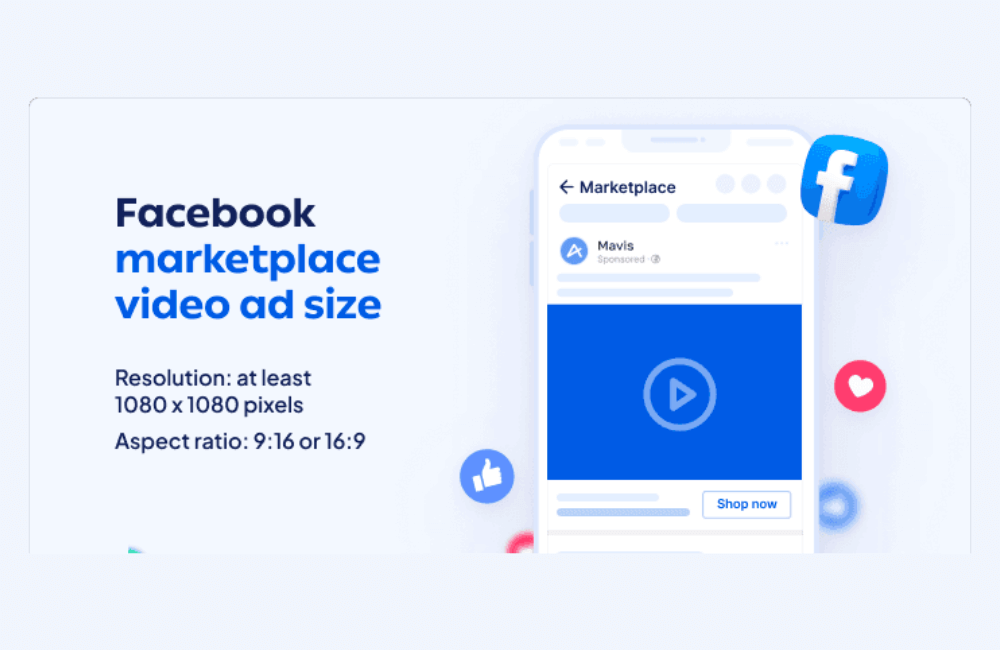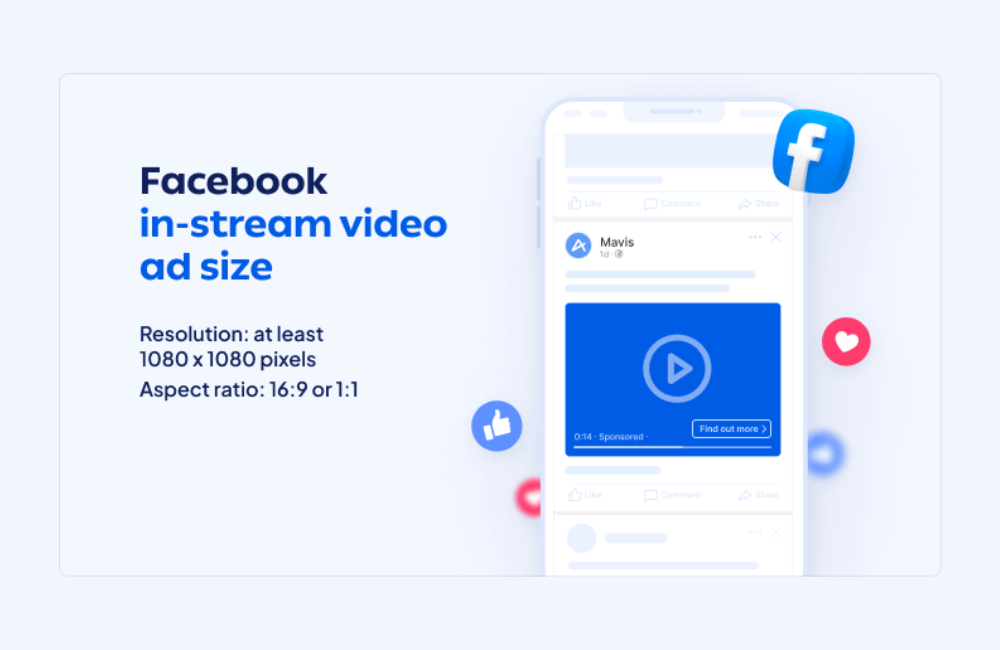Facebook Ad Video Size Requirements: Aspect Ratios for Every Placement

When running ads on Facebook, you’ll notice that each ad format has its own requirements for size and technical specifications. Because Facebook offers many different formats and display placements, mastering the standard specifications is a mandatory factor to ensure smooth ad delivery.
If designed with the correct dimensions, the ad will be displayed optimally. Conversely, even a small deviation can make the ad perform poorly or even get rejected. If you are looking for a detailed guide on the most standard Facebook video ad sizes and how to apply them to your campaigns, then this article from BlackHatWorld is the resource for you.
Meta’s major change in ads size
For many years, we have been familiar with using the 1:1 (square) ratio for most ad creatives on Facebook and Instagram. This was once considered the “traditional standard” size because when displayed on the Feed of both platforms, the square format provided a neat, balanced, and easy-to-view experience.
However, just a few months ago, Meta announced a significant change that directly affects how we design and deploy ads. Instead of the familiar 1:1 ratio, Meta has switched to recommending the 4:5 ratio for ads in the Facebook feed and Instagram feed.
Why did Meta change from 1:1 to 4:5?

The 4:5 ratio is more vertical than the traditional square format, and the notable point is that it takes up about 25% more screen space. This means our ads have a better chance to stand out, attract attention more effectively, and hold user retention longer.
For example, if you run a fashion ad, a full-body model image with a 4:5 ratio will display much more clearly and be more eye-catching than 1:1. Users scrolling through the news feed will stop longer, thereby increasing the likelihood of clicks or interactions.
In its official documentation, Meta also confirmed this and emphasized that the 4:5 size is the standard recommendation for both images and videos in the Facebook feed and Instagram feed. This is not just advice but almost a “new standard” that we must follow if we want to optimize ad performance.
Other placements to note regarding size
Besides the Feed, advertisers cannot ignore other placements provided by Meta, especially Instagram Stories. For this format, the recommended standard size is 9:16 (full vertical screen).
For example, if you are introducing a cosmetic product, leverage stories with a 9:16 video. Users will see the full-screen ad without being distracted by other posts, thereby increasing the potential for direct interaction, such as “Swipe Up” or “Click Link.”
This means that in 2025 and the years to come, when we design ads for Facebook and Instagram, we need to prepare at least two versions: 4:5 for the feed and 9:16 for stories. This flexibility not only helps campaigns achieve optimal effectiveness but also demonstrates professionalism in how we utilize every display space that Meta provides.
Facebook Ad Video Size Requirements: Aspect Ratios for Every Placement
When running ads on Facebook, many new advertisers focus solely on content and images, forgetting that size and aspect ratio also play a decisive role in display effectiveness. In fact, each ad placement, like Feed, Stories, or Reels, has different technical standards. If you use the wrong ratio, the ad may be rejected by Facebook or display poorly, leading to reduced engagement.
Facebook Video Feeds Ads
Many people mistakenly believe this placement must use a video. In reality, amidst a stream of moving content, a cleverly designed static image creates a fresh stopping point, drawing more user attention.
Design recommendations
- Aspect ratio: 1:1 to 4:5.
- Resolution: maximum 1440 x 1800 px.
- Format: JPG or PNG.
Text recommendations
- Primary text: 50–150 characters.
- Headline: 27 characters.
Technical requirements
- Maximum size: 30MB.
- Minimum width: 600 px.
- Minimum height: 600 px (1:1) or 750 px (4:5).
- Aspect ratio tolerance: 3%.
We advise advertisers to use bright colors and in-use product photos to create a sense of familiarity.
Facebook Marketplace

Marketplace is where users go with a ready-to-buy mindset. Therefore, let the product speak for itself.
Design recommendations
- Ratio: 1:1.
- Resolution: at least 1080 x 1080 px.
- Format: JPG or PNG.
Text recommendations
- Primary text: 125 characters.
- Headline: 40 characters.
- Description: 30 characters.
Technical requirements
- Maximum size: 30MB.
Ads on Facebook Reels (Overlay)
Overlay ads on Reels are similar to a sticker appearing on the video. The key is subtlety and simplicity.
Design Recommendations
- Aspect ratio: 1.91:1 to 1:1
- Resolution: Minimum 1080 x 1080 px
- Format: JPG or PNG
Text Recommendations
- Primary text: 72 characters
- Headline: 10 characters
Technical Requirements
- Aspect ratio tolerance: 3%
- Maximum file size: 30MB
- Minimum width/height: 600 px
- Safe zones: Top 14%; Bottom 35%; Both sides 6%
Facebook Feed
When you first start running ads and only choose one placement, Facebook Feed is always the number one choice. This is the “golden” area where people scroll the most and where ads can easily capture attention. Therefore, the image or video appearing here should look natural enough to blend with the newsfeed while still being eye-catching to make users stop.
Design Recommendations
- Ratio: 1:1 to 4:5 (prefer 4:5 on mobile).
- Resolution: 1:1 (1440 x 1440 px) or 4:5 (1440 x 1800 px).
- Format: JPG or PNG.
Text Recommendations
- Main content: 50–150 characters, concise, directly highlighting the benefits.
- Headline: 27 characters.
Technical Requirements
- Maximum file size: 30MB.
- Minimum width: 600 px.
- Minimum height: 600 px (1:1) or 750 px (4:5).
- Aspect ratio tolerance: 3%.
Note: Avoid using landscape images. Vertical images (4:5) are always more effective on mobile display.
Facebook In-stream Video

These are the images that appear when users are watching videos. You only have a few seconds to make an impression, so the thumbnail needs to be clear, brand-recognizable, and not overloaded with details.
Design Recommendations
- Ratio: 1.91:1 to 1:1
- Resolution: at least 1080 x 1080 px
- Format: JPG or PNG
Text Recommendations
- Main content: 125 characters
- Title: 40 characters
Technical Requirements
- Maximum file size: 30MB
- Minimum dimensions: 600 x 600 px
- Aspect ratio tolerance: 3%
Facebook Stories
Stories are a vertical format that is fast and highly engaging. Do not reuse Feed images; instead, design customized creatives to fit the full-screen vertical experience.
Design Recommendations
- Aspect Ratio: 9:16
- Resolution: 1440 x 2560 px
- Safe Zone: Top 14% (~250 px); Bottom 20% (~340 px)
- Format: JPG or PNG
Text Recommendations
- Main Content: 125 characters
- Headline: 40 characters
Technical Requirements
- Maximum File Size: 30MB
- Minimum Width: 500 px
- Aspect Ratio Tolerance: 1%
Steps to adjust a video according to Facebook’s size requirements.
To help advertisers optimize image and video content on Facebook, we will guide you through the process step-by-step. With this process, you will both save time and ensure the ad displays well on all formats.
Editing videos on Canva
We often use Canva to design ad images because the tool is intuitive, easy to use, and can be applied to videos as well. However, you can completely apply this process to Photoshop, Figma, or any similar software. The steps are:
- Step 1: Access Canva → Select Create a new design → Choose Instagram Story (standard size 1080×1920 pixels, equivalent to 9:16 ratio).
- Step 2: Upload the standard template we provide (available in the attached documents or description).
- Step 3: Add the video or image you want to advertise → Align the main content (product, face, text, emoji, etc.) into the safe central area.
The key point here is that all critical elements must be placed in the central zone. Thanks to this, when the video is displayed in different formats (4:5, 1:1, or 9:16), the content remains clear and not cut off.
Example: If you are advertising a cosmetic product, place the product in the center of the screen and keep the tagline inside the safe zone. This way, whether customers view it on Story or Feed, they can still see the full information.
Tips for easy video editing.
To make images or videos easier to edit later, you should pay attention right from the shooting/capturing stage:
- Keep the subject in the center of the frame, avoiding leaning to one side.
- Turn on the grid on your camera or phone for better composition alignment.
- Always leave headroom above, below, and on both sides. This helps ensure that when cropping to different ratios, the product or face does not lose detail.
For example: If you are shooting a clip introducing a beverage product, keep the glass centered in the frame, equidistant from the two edges of the screen. This way, when cropping to a 4:5 ratio, the product maintains balance.
Understanding and complying with Facebook ad video size requirements is a key factor that helps advertisers optimize campaign performance. When videos are aligned with the correct aspect ratio for each placement, the content will be displayed fully, professionally, and more attractively to viewers. This not only increases the click-through rate (CTR) but also helps reduce advertising costs, delivering more conversions for businesses.
Frequently asked questions
Yes. If the size is incorrect, the video may be cropped, displayed with the wrong layout, or even rejected by Facebook, reducing ad effectiveness.
You should prioritize the 4:5 aspect ratio for news feed and 9:16 for stories/reels, as these are the two formats recommended by Facebook for optimal display across most placements.
💬 Contact now for free consultation from BHW!
- Website: https://vi.blackhatworld.io/
- Telegram: @bhw_agency
- Whatsapp: +84819001811
- Wechat: bhwagency
- Email: [email protected]
This article is also available in other languages: